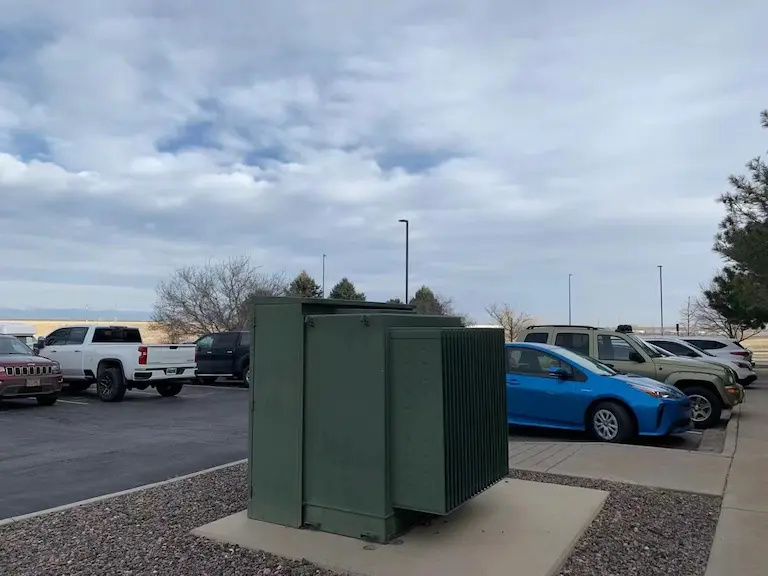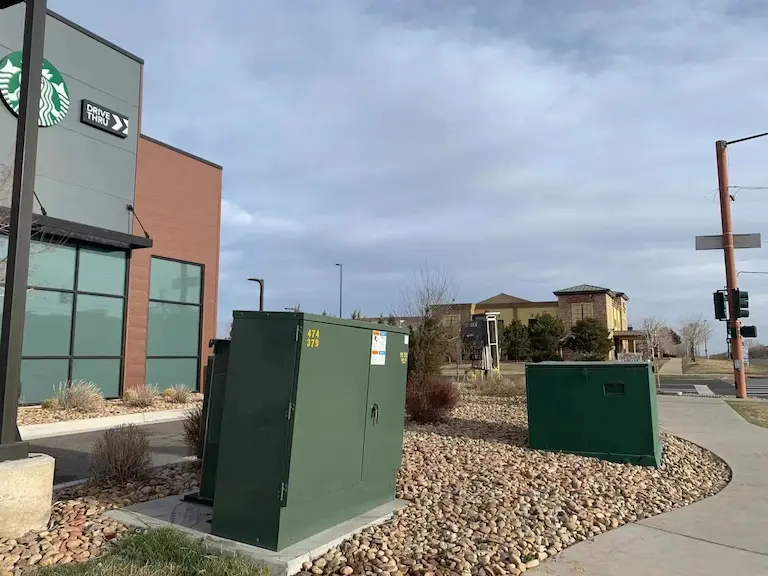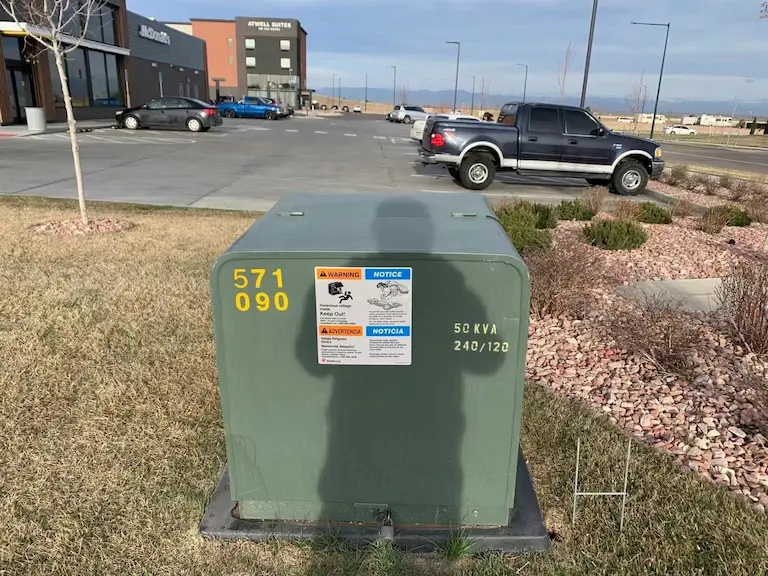
How to Choose Pad Mounted Transformer?
Table of Contents Selecting the right pad-mounted transformer requires careful consideration of several critical
ELECTRIC, WITH AN EDGE
As an engineer in the House Market Utility sector, it is essential to have extensive knowledge of the transformer for House market Utility industry and comprehend the unique needs of residential consumers. This comprehensive guide will discuss the selection and procurement of suitable three-phase and single-phase pad mounted transformers for House Market Utility, addressing concerns such as the residential transformer shortage, pad-mounted transformer shortage, and the proper installation and maintenance practices to ensure safety.

Choosing Daelim’s pad mounted transformer for your House Market Utility offers several advantages, making it an ideal choice for various residential and commercial applications:
Safety: Daelim’s pad mounted transformers are designed with safety in mind. Their sealed high-voltage and low-voltage compartments minimize the risk of accidents, and the lockable cabinets ensure unauthorized access is prevented. This design is particularly beneficial for residential areas, where safety is of utmost importance.
Versatility: The transformers come in radial and loop feed configurations, making them suitable for different types of circuits and enabling seamless integration into existing infrastructure.
Efficient design: Daelim’s transformers are optimized for maximum efficiency, using aluminum or copper windings depending on specific project requirements. This ensures low energy losses and cost savings over the transformer’s operational life.
Compact footprint: The transformers’ design is space-efficient, allowing for easier installation in areas with limited space or where aesthetics are a concern.
Reliability: Daelim has a reputation for producing reliable and durable transformers, ensuring long-lasting performance and reduced maintenance costs.
Customization: Daelim can tailor their transformers to meet specific customer requirements, making them a flexible choice for various House Market Utility applications.
By choosing Daelim’s pad mounted transformer for your House Market Utility, you can ensure a safe, reliable, and efficient power distribution solution for residential and commercial applications, addressing transformer shortages while offering a high-quality, compliant product.
The primary reason why three-phase and single-phase pad mounted transformers are suitable for transformer House Market Utility is their specific design catering to residential applications. These House Market Utility transformers provide efficient and reliable power distribution to homes, ensuring stable electricity supply and minimizing the risk of outages. Additionally, pad mounted transformers are compact, visually appealing, and produce minimal noise, making them ideal for installation in residential neighborhoods.

Compact design: Pad mounted transformers occupy less space than traditional pole-mounted transformers, making them perfect for residential areas with limited space.
Safety features: These transformers are enclosed in tamper-resistant cabinets, reducing the risk of unauthorized access, vandalism, and electrical accidents.
Noise reduction: Pad mounted transformers operate at lower noise levels than traditional pole-mounted transformers, making them more suitable for installation near homes.
Easy maintenance: The enclosures of pad mounted transformers are designed to simplify maintenance, reducing downtime and service costs.

Common House Market Utility applications involve supplying electricity to single-family homes, apartments, and condominium complexes. To cater to different needs, pad mounted transformers come in various capacities. Selecting the right capacity depends on the power requirements of each house or building and the number of units to be served. Typically, a single-phase pad mounted transformer with a capacity of 25 kVA to 100 kVA can supply power to several houses, while a three-phase pad mounted transformer with a capacity of 150 kVA to 2500 kVA can serve larger residential areas and multi-unit buildings.
Pad mounted transformers pose minimal hazards when installed near houses, as they are designed with safety in mind. Their tamper-resistant enclosures prevent unauthorized access and minimize the risk of electrical accidents. However, it is essential to follow proper installation guidelines and maintain a safe distance from homes and other structures to ensure safety. Installation should be performed by qualified professionals, and regular maintenance should be scheduled to guarantee optimal performance and longevity.
To address the increasing demand for residential transformers and the distribution transformer near house concern, various capacities of House Market Utility transformers are available for sale. This ensures that suitable options can be found for all types of residential requirements and helps mitigate the residential transformer shortage and pad-mounted transformer shortage.

The basic principle of the Liquid-Filled Loop Feed Pad Mounted Transformer for House market Utility power compensation is that the closer you are to the end of the supply, the better the economic results. The reason for this is that the closer you get to the end of the supply, the more technology is available at the compensation point to reduce the line losses caused by reactive currents.
In the current situation, house market utility transformers are generally configured in a centralised compensation mode. The main advantage of this model is that it is relatively inexpensive to maintain and construct, and relatively simple. The disadvantage of this model is that its effect can only be produced on the upper level of the equipment and the grid, thus not contributing much to the losses in the low voltage network of the Liquid-Filled Loop Feed Pad Mounted Transformer for House market Utility. In order to reduce the losses on the grid in reactive power compensation mode, it is necessary to move the Liquid-Filled Loop Feed Pad Mounted Transformer for House market Utility power compensation closer to the client, which, of course, requires decentralised reactive power compensation.
In summary, the principles for the configuration of the House market Utility transformer reactive power compensation are:
1) Strengthen the mutual combination between decentralised compensation as well as centralised compensation.
2) To master the effective combination between balancing and overall balancing, of which localisation is the main object.
3) Effective combination between voltage regulation and loss reduction, with loss reduction as the main objective.
4) Master the relationship between user compensation and the compensation of the power sector.

Tracking compensation in urban low-voltage distribution networks means that the reactive power compensation device is used as a protection device, while the compensation of low-voltage capacitor banks is controlled on the 0.4kv busbar. This method can replace the two compensation modes as well as the random one, and its compensation effect is better. It has both advantages and disadvantages, the advantages being that it has a relatively small operational and maintenance workload and is relatively flexible in its operation, so it is more reliable and has a relatively long life. However, the disadvantages of this mode of compensation are the relatively large initial investment, and the complexity of the protection and control devices for this mode of compensation.

In the urban low-voltage distribution network, this means that low-voltage capacitors are connected to the Pad Mounted Transformer through the low-voltage insurance to compensate for the no-load reactive power of the House market utility transformer. The reactive load of the Pad Mounted Transformer is mainly the no-load excitation reactive power of the House market Utility transformer when it is no-load or light-load, and the no-load reactive power is a major part of the reactive load of the relevant electricity-using unit. However, for the lightly loaded Pad Mounted Transformer, these losses account for a large proportion of the total power supply, which leads to increasing losses. This can lead to increasing losses. Of course, follower compensation also has its advantages. The advantages of reactive power compensation in cities are that it is relatively easy to maintain and that it is relatively easy to maintain and manage, thus increasing the efficiency of the Pad Mounted Transformer and reducing the losses in reactive power compensation. It is one of the most effective and practical means of reactive power compensation for urban Pad Mounted Transformers today.

Random compensation in the urban low-voltage distribution network means that the motors are connected in parallel with the low-voltage capacitor banks and that the motors are switched on simultaneously by means of certain protection and control devices. Of course, the random compensation method in reactive power compensation mainly compensates the excitation reactive power and is used to reduce the reactive power consumption of the motor. Therefore, this type of compensation is better able to limit the problem of uncompensated power loads in the relevant electricity consumers. At the same time, the significant advantage of stochastic compensation in urban Pad Mounted Transformer reactive power compensation is that the reactive power compensation is put in when the relevant equipment is in operation, and when the equipment is out of operation, the corresponding compensation equipment is withdrawn, and the compensation capacity does not need to be adjusted relatively frequently. Therefore, it can be said that in this type of compensation, maintenance is simple and in addition, this mode is relatively small in terms of the incidence of accidents and relatively small in terms of investment.

Large buildings are usually located in the centre of the city, where urban line corridors and substation sites are strictly limited, and the number of power lines in each area is limited by the number of line channels, which makes it difficult to meet the number of circuits and spare capacity required by large buildings. In order to better meet the needs of large buildings with large capacities and high load levels, it is important to select a suitable single-phase pad mounted transformer or three-phase pad mounted transformer.
In cities, all or more than half of the customers with an installed capacity of more than 8 MVA are primary and secondary load customers. If a conventional dual power supply is used, the single 10kV line will exceed the supply limit; if it is divided into two parts and the dual power supply is used separately, this will increase the investment of the customer and is not conducive to future operation and management.
To this end, this paper proposes a new way of supplying power – three power supplies (two for one) power supply mode. In this way, each line carries 50% of the customer’s installed capacity, increasing the supply circuit, reducing the line supply load and reducing the standby capacity to improve supply reliability and reduce the line vacancy rate. Using three power sources (two for one) power supply method, customer standby capacity can be reduced by half and the power supply capacity of the line (substation) can be greatly increased.
This reduces the capacity of the main supply line so that the line can be supplied to other customers via the Liquid-Filled Loop Feed, reducing the customer’s occupation of the line and increasing the reliability of the supply in the area with the same supply circuit. With this type of supply, the loss of any one power source does not affect the customer’s normal consumption of electricity, and even if two power sources are lost, there is still 50% of the supply capacity, which greatly improves the reliability of the supply compared to the one-supply-one-standby method.
Compared to the one supply and one standby method, the customer’s investment in equipment will increase when two supplies and one standby are used, but for those customers whose capacity is larger and who cannot meet the requirements by using a single line, the comprehensive investment will be reduced compared to the one supply and one standby power supply method.
In cities with a capacity of more than 8MVA, as well as part of the electricity load for the first and second load while the capacity does not exceed 4MVA, users can use double power supply, high voltage is not connected, low voltage interconnection of the power supply mode.
Using this approach, each line to provide 50% of the customer’s capacity, House market Utility transformer two contact, mutual backup, for one or two loads to provide dual power.
Using this power supply method line supply capacity stability, line vacancy rate is low, in order to meet the requirements of power supply reliability, the customer’s investment in electrical equipment is reduced, the cost of expenditure to improve reliability is also reduced by half, the economic benefits are high, and 10kV busbar no contact, to the customer’s operation and management brings convenience.
With the dual power supply method, when one power supply goes out, the other power supply can only supply half of the total capacity, so the risk of losing power to important loads is greatly increased compared to the two supply and one standby method. In other words, users using dual power supply methods require that the capacity of the primary and secondary loads does not exceed 50% of the total capacity, otherwise the total capacity must be increased.
Take a tunnel as an example. This tunnel has four lanes in both directions and is a major traffic artery with a high density of vehicles coming and going. The total electricity demand for the tunnel is 2 260 kVA and a total of 4 pad mounted transformers for House market Utility are fitted, including 2 each of 630 kVA and 500 kVA padmounted transformers. Some of the tunnel loads, such as fire fighting, emergency lighting and smoke extraction facilities, are primary and secondary loads. The power supply mode of double power supply standing, high voltage unconnected and low voltage interconnected is used.
According to the tunnel’s power supply requirements, two 10kV lines 1 and 2 are drawn from the mains for the Ⅰ and Ⅱ section buses respectively. Section Ⅰ and section Ⅱ busbar each with 2 House market Utility transformer, including 630kVA and 500kVA each 1, section Ⅰ and section Ⅱ busbar not contact, but 2 same capacity House market Utility transformer low-voltage side contact, and equipped with self-injection. Under normal power supply mode, line 1 and line 2 are used for the load carried by section Ⅰ and section Ⅱ buses respectively, and the House market Utility pad mounted transformers are operated separately. When line 1 or line 2 is out of service, the two pad mounted transformers for House market Utility on the corresponding busbar are out of service and the low-voltage standby self-injection is in operation, and the other two pad mounted transformers run through the low-voltage busbar for the important loads that are out of service, ensuring a reliable power supply for all important loads.
For large buildings with multiple independent users, such as large commercial areas and standard factory buildings, a power supply method can be used, whereby the power supply department supplies power directly to the household and the customer signs a supply and consumption contract with the power company and meters the electricity separately, with the tariff determined by the nature of the electricity used and the industry.
Under this method, residential customers with a capacity of more than 8kW are supplied with a three-phase four-wire electricity supply; those with a capacity of less than 100kW are supplied by a common pad mounted transformer for House market Utility; those with a capacity of 100kW and above are supplied with a special pad mounted transformer for House market Utility. for House market Utility. In addition, the public parts of the building, such as high-rise lifts, fire pumps, monitoring, emergency power supply, central air-conditioning, etc., require high reliability of power supply, so in order to improve the reliability of power supply, a double power supply can be set up with a special pad mounted transformer for House market Utility.
With this approach, the property rights of the public House market Utility transformer, low-voltage distribution cabinets, dense busbars (cables), branch boxes and large meter boxes to households built by the construction unit will be handed over to the power supply enterprise.
The responsibility demarcation point for the supply and distribution facilities of the building shall be clearly defined: the responsibility demarcation point for the property rights of the customer supplied directly by the floor branch box with low voltage, at the head of the stake under the switch in the branch box on each floor; the responsibility demarcation point for the customer supplied directly by the dense busbar, at the head of the stake under the switch in the busbar plug-in box;
the point of demarcation of the customer’s responsibility for a direct supply from a communal House market Utility pad mounted transformer low voltage distribution cabinet, for the lower stake head of the low voltage switch in that household;
Dedicated Liquid-Filled Loop Feed Pad Mounted Transformer customer responsibility demarcation point for the lower stake head of the Liquid-Filled Loop Feed load switch for that household at the Liquid-Filled Loop Feed station.
The supply to the household avoids the separate occupation of the line by the customer and reduces the capacity of the main supply line; the main supply line can supply capacity to other customers via the Liquid-Filled Loop Feed. This way the reliability of the supply is increased for the same supply circuit.
In addition, by using this method, the power company can penalise individual customers for defaulting on their electricity bills without affecting the normal consumption of other customers in the building, which facilitates the management of the power company’s operations.
However, the adoption of this approach may require a change of ownership, consolidation or subdivision of customer units, and the resulting change in the way electricity is supplied may also cause management problems.
The substation is equipped with 5 units of public Liquid-Filled Loop Feed Pad Mounted Transformer for House market Utility, with a total capacity of 5,500kVA, and the Liquid-Filled Loop Feed Pad Mounted Transformer for The House market Utility uses the SCB9 series, two of which have a capacity of 1,250kV and three of which have a capacity of 1,000kVA. the communal Liquid-Filled Loop Feed Pad Mounted Transformer for House market Utility uses Schneid er’s Prisma er’s Prisma type low voltage cabinet with two low voltage contacts;
The high-rise low-voltage outlets use KFM dense busbars, 10 in total (2 meter boxes on each floor) with 2 plug holes reserved for each floor; the low-voltage outlets of the shops use cables to the meter boxes via branch boxes; the office and apartment buildings are all supplied by the public Liquid-Filled Loop Feed Pad Mounted Transformer for House market Utility supply, metering to households. The lifts, fire-fighting, water pumps and places with a capacity greater than 100kVA on the upper floors are separately supplied by a special substation for customers with high distribution, which is equipped with two SCB9 series 400kV ALiquid-Filled Loop Feed Pad Mounted Transformer for House market Utility. Dual power supply, brought in from the Liquid-Filled Loop Feed room.
The main distribution line is a closed busbar, and the power supply for fire fighting equipment such as fire pumps, fire fighting lifts and smoke control facilities is supplied from the two sections of busbar in the low distribution room to the end of the power supply equipment line, which is supplied by a double power automatic switching device.

Selecting and procuring suitable pad mounted transformers for House Market Utility requires a thorough understanding of the transformer industry, the needs of residential consumers, and safety considerations. By focusing on three-phase and single-phase pad mounted transformers, engineers can ensure efficient, reliable, and safe power distribution for various residential applications. Proper installation and maintenance practices further guarantee the transformer’s longevity and effectiveness in serving the House Market Utility sector.
Download Resource

Table of Contents Selecting the right pad-mounted transformer requires careful consideration of several critical

The primary function of the pad mounted transformer is to serve as a critical distribution

A pad mounted transformer operates through electromagnetic induction, serving as a crucial distribution component that